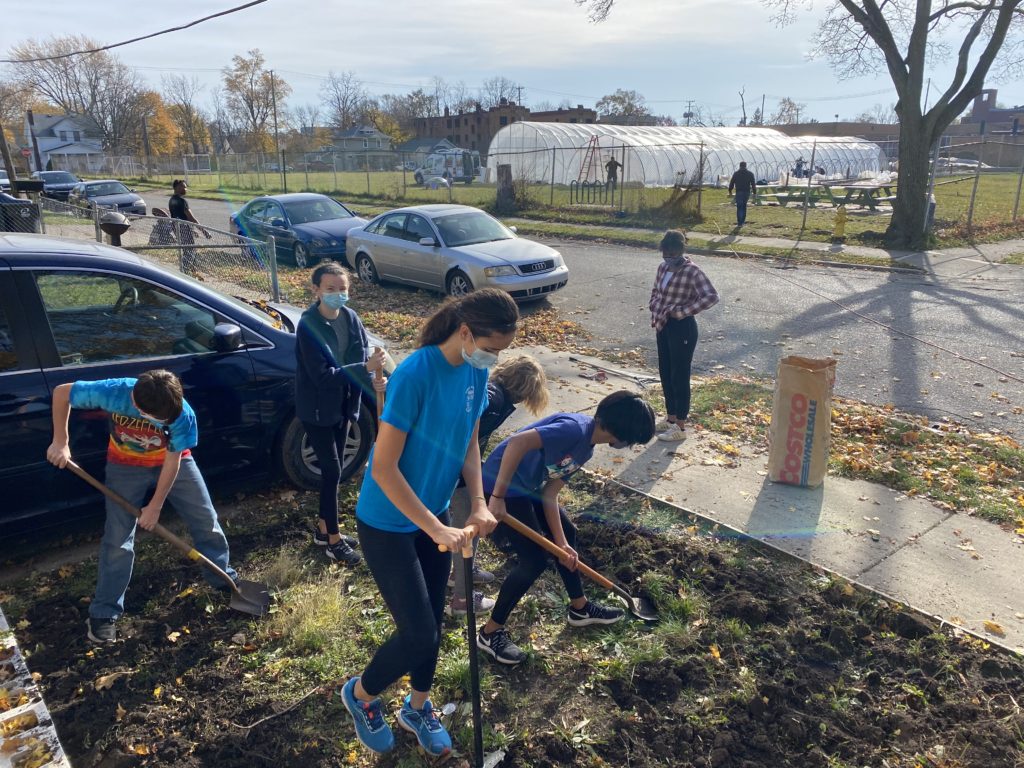
By Rev. Bill Danaher, Rector
A part of our annual Parochial Report this year, Bishop Perry asked each church in our diocese to share how we have adapted to the pandemic while continuing to serve our church and the community. What follows is a summary of some of the ways in which we have responded over this past year. And while it is by no means exhaustive, it’s a great reminder that despite the many curveballs and setbacks of the past year, we have continued to grow and even thrive, because we with God’s help, we never stopped meeting Jesus, finding joy, sharing beauty, and serving others!
Are you new to Christ Church Cranbrook? Have you enjoyed our online worship and programing? If you have been thinking about becoming a member, we’d love to have you join us! Click here to learn more.
Narrative for the PAROCHIAL REPORT
Q: What were the primary opportunities, innovations and challenges in conducting worship during the pandemic? What did you learn?
Early on in the pandemic, we articulated a three-fold strategy to connect, embrace, and serve in new ways. To speak to each:
Connect: The pandemic helped us respond to a trend in on-line viewing that had been building since we started live-streaming our services in 2015. Where our on-line viewership had been an ancillary concern, in 2020 it became our main concern. We therefore augmented and increased the production value of our online worship through a significant capital investment. We drew in many viewers and welcomed new pledging members located as far away as Colorado, Arkansas, Florida, and Arizona.
Shifting to a primarily online format also helped us step back and rethink our liturgies so that we could begin developing new services of the Word that went beyond the normal binary of Eucharist/Morning and Evening Prayer.
This being said, our outdoor services held over the Summer and Fall taught us the equally valuable lesson that our worship could be powerful in the park-like setting of our church campus. On more than one occasion, we have been joined by people who were on a walk and decided to stay for the service and listen to the sermon.
Finally, we were able to recruit and organize a team of volunteers to complete an every member canvass by phone, which helped us connect with our entire membership within the space of a few weeks. This led to a larger investment by our lay leaders, who now lead weekly Bible-studies, adult education forums, and Zoom coffee hours.
Embrace: By far, the largest challenge and most important lesson was how to carry on our program life during the pandemic. Continuing our ministries to our youth and children, many of whom were spending an enormous amount of their time already on ZOOM, has been a significant challenge. To remedy this, a lot of programming shifted to service-oriented activities that could be done while staying safely socially distanced, such as helping plant seedlings for a local urban farm and community-development program.
Although many of our children and youth felt zoomed-out, our adults were able to take advantage of Zoom programming that did not require them to physically travel to the church. This greatly expanded the reach of our programming as well as the people we could bring in to lead us. This past week, for example, we had more that 350 people attend our Wednesday and Sunday adult-education classes from all over the United States and Europe. As a result, we learned that we could attract and sustain a large following for our adult education classes.
Serve: Perhaps the hardest, and most necessary, adjustment we have had to make regards our mission and outreach. Over the past few years, we have been emphasizing personal involvement in the programs and organizations we support, using the saying that “money follows hands.”
However, the pandemic meant that many of our outreach partners had to restrict the use of volunteers while, at the same time, encountering a spike in the needs and number of their clients. Therefore, we suspended the culmination of our stewardship campaign and began making a special appeal for donations to help our many outreach partners address the needs of those directly affected by COVID-19, raising more than $250,000. This focus on service actually helped us meet our stewardship goals for 2020 and 2021 in a way that would have been impossible without this prioritization, as we shared stories and thanks from all the people we served over the course of 2020.
Q: What are the primary opportunities and challenges your church is facing as it plans for the future?
The major opportunity we have is to build a church that has a national and international reach. The major challenge we face is to continue to serve the online community and new members that we gained in 2020. Particularly as we are planning to restart our in-person services, we need to continue to explore ways to make sure both our online and in-person communities feel seen and heard.
Q: What three things have changed the most in how the church conducts its ministry?